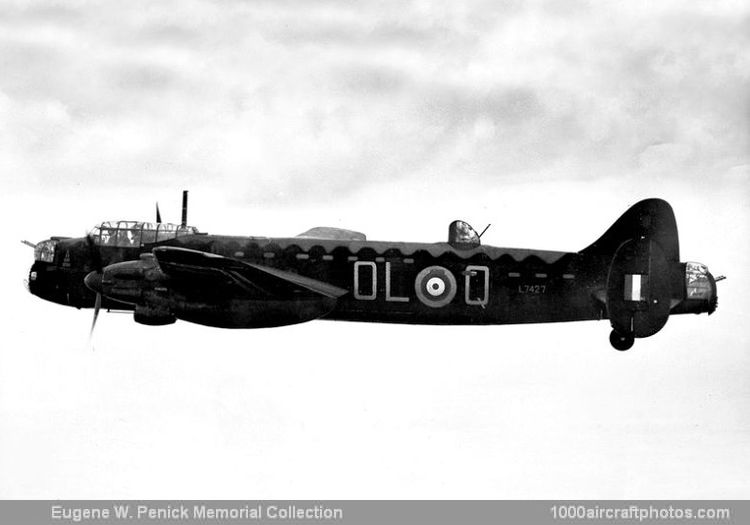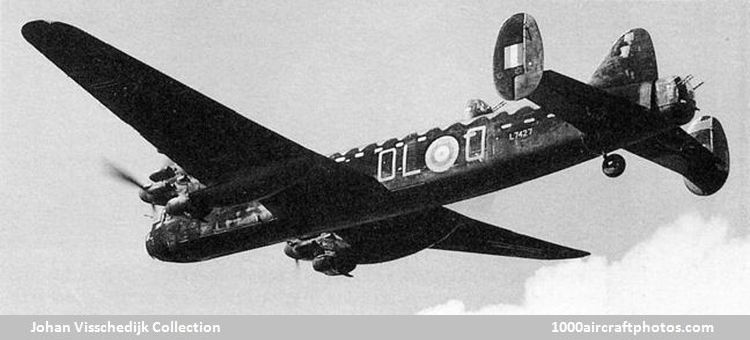12/31/2023. Remarks by Johan Visschedijk: "On July 25, 1939, the twin-engine Avro 679 Manchester prototype took off from Ringway Airport (now Manchester International Airport) for its maiden flight. At the controls was Avro's chief test pilot Sam Brown. The aircraft was designed in 1937 by Avro's chief designer Roy Chadwick based on the Air Ministry Specification P.13/36. This outlined a twin-engine bomber equipped with the new 1,760 hp Rolls-Royce Vulture 24-cylinder liquid-cooled X-engine.
Handley Page, which was the only one of several other P.13/36 tenders also selected for construction of two prototypes, Handley Page decided to alter their H.P.56 project, since the development of the Vulture was very slow, to a four-engine aircraft equipped with Rolls-Royce Merlin V-12 engines. Their project ultimately produced the very successful Halifax bomber.
Although the Vulture engine development program was plagued by numerous setbacks, Chadwick remained confident in the new engine. In January 1940 the RAF ordered 1,200 Manchester Mk.Is and in November the first aircraft were put into service by 5 Group Bomber Command, replacing the outdated Handley Page Hampden.
The Manchester had an excellent airframe and would have been an excellent aircraft for Bomber Command as it could carry more bombs than other types, was better armed and had a longer flying range. Unfortunately, the Vulture engine proved to be very unreliable and its power output was disappointing. As a result, the Manchester's loss rate on operational missions increased to 5.8 percent. In addition, many experienced crews died during training flights. All this led to the Vulture project being abandoned and only 209 Manchesters being delivered to the RAF. Of these, 64 were lost on operational missions and twelve crashed during training flights. The Manchester type carried out its last bombing mission over Bremen on the night of June 25 to 26, 1942. The Manchester was developed into the four-engine Lancaster, which became the principal and most successful of all heavy bombers used by RAF Bomber Command.
Pictured above in March 1942, the RAF No. 83 Squadron aircraft, coded "OL-Q", carries ten operational mission symbols on its nose, it completed four more missions before it was lost on its 15th mission in the night of April 8 to 9.
L7427, with seven crew, departed RAF Scampton, Lincolnshire, UK at 22:15 on April 8 for a bombing mission of the Blohm & Voss shipyards in Hamburg. West of Lastrup, some 100 mls (161 km) south west of its target, it was attacked and crashed in the nearby small village of Ermke at 00:49 on April 9. Six crew were killed, the co-pilot, Peter Anthony Lovegroove, survived with injuries, but died in captivity seven months later, November 12, 1942.
Downing the aircraft in the Lastrup area was claimed by German night fighter pilot Feldwebel Gerhard Goerke, as well as by an anti-aircraft gun (Flak) unit.

